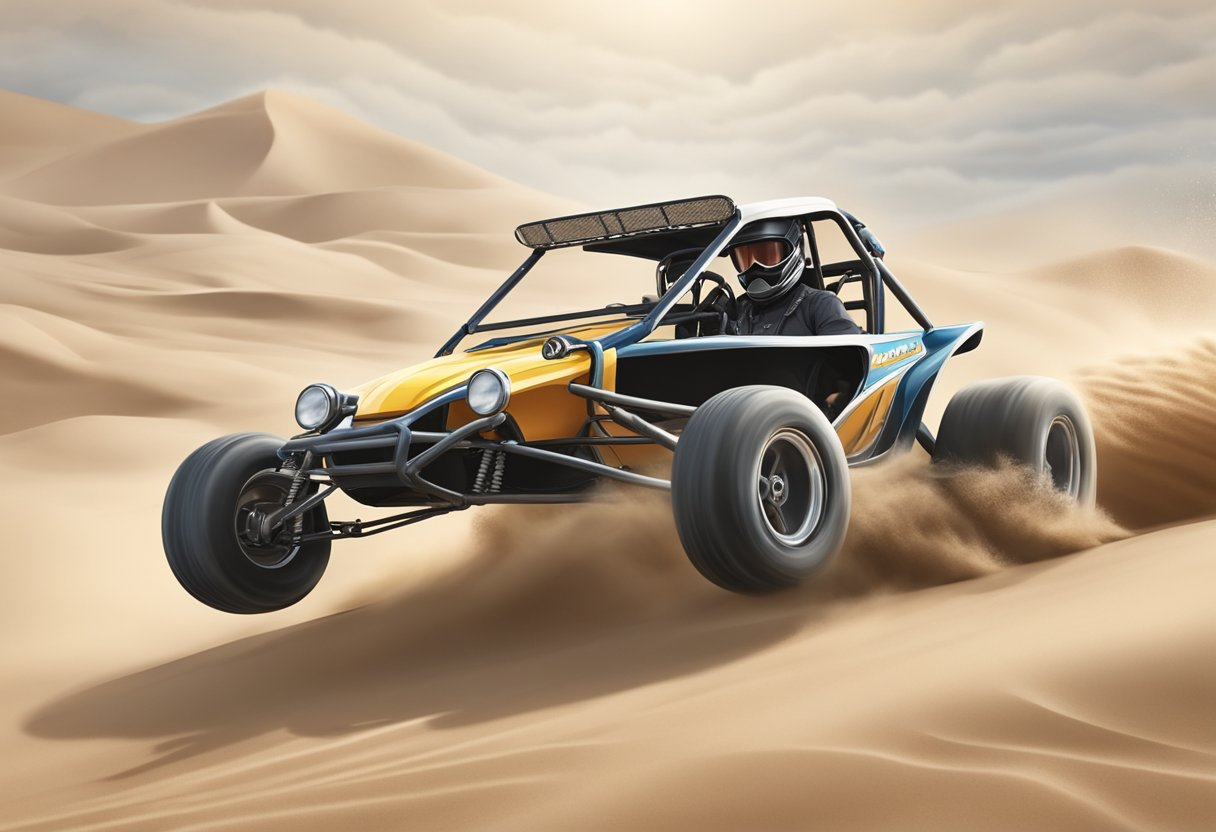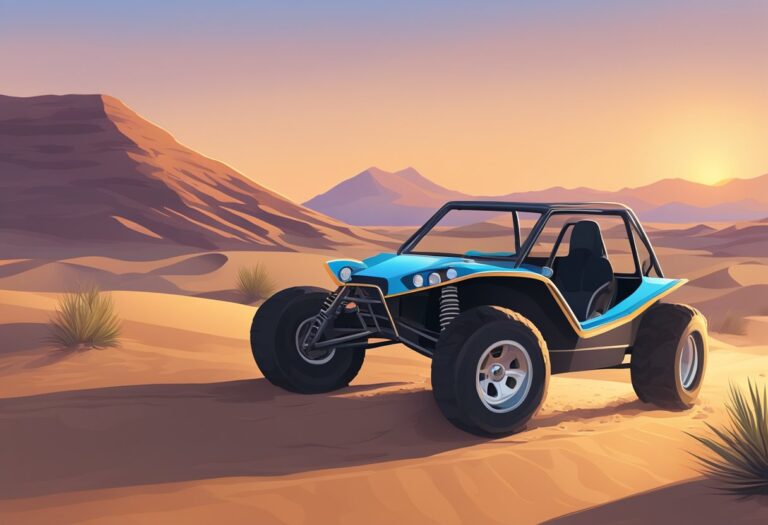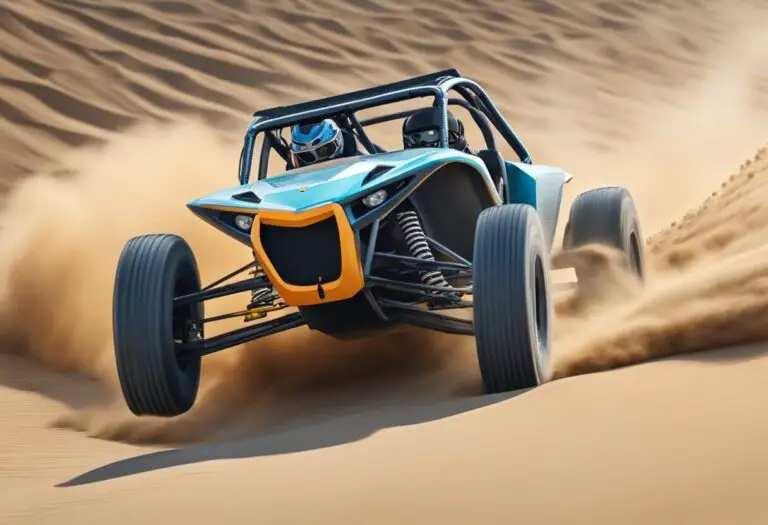What Is a Sand Rail Dune Buggy? A Clear Explanation

Introduction to Sand Rail Dune Buggies
Sand rail dune buggies, often referred to simply as sand rails, are a specialized type of off-road vehicle designed specifically for traversing sand dunes and other soft terrains. Unlike traditional dune buggies, sand rails feature a lightweight, open-frame construction that enhances maneuverability and performance on loose sand. These vehicles are engineered for extreme off-road conditions, offering a thrilling and adventurous ride for enthusiasts.
History and Evolution
Origin of Sand Rail Dune Buggies
The concept of dune buggies dates back to the 1960s when off-road enthusiasts began modifying Volkswagen Beetles to handle sandy terrains. Bruce Meyers is credited with creating the first true dune buggy, the Meyers Manx, which set the standard for future designs. Over time, the need for more specialized vehicles led to the evolution of sand rails, which are built from the ground up to tackle sand dunes.
Evolution from Traditional Dune Buggies
Traditional dune buggies were often modified street vehicles, but sand rails are purpose-built with an emphasis on performance and safety. The transition from fiberglass bodies to tubular frames marked a significant shift, allowing for greater customization and improved handling. Sand rails have evolved to include advanced suspension systems, powerful engines, and specialized tires, making them the ultimate choice for dune driving.
Design and Construction
Basic Structure and Components
Sand rails are built around a tubular steel frame, which provides strength and rigidity while keeping the overall weight low. This open-frame design lacks body panels and doors, emphasizing a minimalist approach that prioritizes performance over comfort. Key components of a sand rail include:
- Frame: Tubular steel or aluminum, often with an integrated roll cage.
- Engine: Typically rear-mounted for better weight distribution.
- Suspension: Customizable systems to handle rough terrains.
- Tires: Specialized for sand, such as paddle tires at the rear.
Comparison with Traditional Dune Buggies
While both sand rails and traditional dune buggies are designed for off-road use, they differ significantly in construction. Traditional dune buggies often retain more of the original car’s bodywork and may be street-legal with modifications. In contrast, sand rails are stripped down to the essentials, focusing on off-road capabilities and lightweight design.
Importance of Low Center of Gravity and Weight Distribution
A low center of gravity is crucial for stability on steep dunes and uneven terrain. Sand rails achieve this by positioning the engine at the rear and keeping the overall weight low. This design helps prevent rollovers and enhances maneuverability, allowing drivers to navigate challenging landscapes with ease.
Types of Sand Rail Dune Buggies
Long Travel Sand Rails
Long travel sand rails are designed for maximum comfort and performance. They feature extended suspension systems with coil-over shocks and A-arm construction, providing a smooth ride over rough terrains. These vehicles are typically the most expensive and offer the highest level of customization.
Mid Travel Sand Rails
Mid travel sand rails offer a balance between cost and performance. They also utilize A-arm suspension but with stock components instead of coil-overs. This makes them more affordable while still providing a comfortable ride and good handling.
Old School Sand Rails
Old school sand rails are built using Volkswagen components and feature I-beam front ends. These vehicles have a nostalgic appeal and are often favored by enthusiasts who appreciate vintage designs. Despite their older technology, they remain capable off-road vehicles.
Customizations and Variations
Every sand rail is unique, with endless possibilities for customization. Owners can choose different engines, seating configurations, and aesthetic touches to make their sand rail stand out. Popular customizations include roof designs, color schemes, and additional accessories like light bars and GPS navigation systems.
Engine and Performance
Common Engine Types
Sand rails are known for their powerful engines, which are crucial for climbing steep dunes and navigating soft sand. Common engine types include:
- Volkswagen: Air-cooled engines from Beetles are popular for their availability and ease of modification.
- Subaru: Fuel-injected engines offer reliability and performance.
- LS Engines: High-performance options from Chevrolet, providing significant power.
- Honda: Reliable and efficient engines often used in custom builds.
Importance of Engine Placement and Power
The rear-mounted engine design not only improves weight distribution but also enhances traction on loose sand. Powerful engines are essential for generating the speed and torque needed to navigate challenging dunes. Sand rails often feature engines with higher horsepower than traditional dune buggies, allowing for more aggressive driving.
Performance Enhancements and Modifications
Performance modifications are common in the sand rail community. Upgrades can include turbochargers, high-performance exhaust systems, and advanced cooling solutions. These enhancements help increase power output and reliability, ensuring that the vehicle can handle the demanding conditions of sand dune driving.
Tire and Suspension Systems
Types of Tires Used
Sand rails typically use specialized tires designed for maximum traction in sand. The most common types include:
- Paddle Tires: Rear tires with large rubber paddles that dig into the sand, providing excellent traction and propulsion.
- Smooth Tires: Front tires with minimal tread to reduce drag and improve steering response.
Suspension Designs
Suspension systems are a critical aspect of sand rail performance. The most common designs include:
- Coil-Over Suspension: Offers superior shock absorption and adjustability, ideal for long travel sand rails.
- A-Arm Suspension: Provides a balance of performance and affordability, used in both mid travel and long travel sand rails.
- I-Beam Suspension: Found in old school sand rails, using components from Volkswagen vehicles.
Impact on Performance and Handling
Advanced suspension systems allow sand rails to handle rough terrains with ease. They provide better shock absorption, reducing the impact on the driver and passengers. This results in a smoother ride and improved control, even at high speeds over challenging landscapes.
Legal and Environmental Considerations
Regulations and Licensing Requirements
In many regions, sand rails are classified as off-road vehicles and are not street-legal. However, some owners modify their sand rails to meet local regulations, adding features like headlights, turn signals, and license plates. It’s important to check with local authorities for specific requirements and restrictions.
Street-Legal Modifications
For those who wish to drive their sand rails on public roads, several modifications are necessary. These can include installing:
- Headlights and Taillights: For visibility and signaling.
- Turn Signals: Essential for indicating lane changes.
- Mirrors: To ensure adequate visibility of surrounding traffic.
- License Plate Brackets: To display registration information.
Environmental Impact and Responsible Riding Practices
Sand rails can have a significant impact on the environment, particularly in fragile dune ecosystems. Responsible riding practices are essential to minimize this impact. This includes:
- Staying on Designated Trails: Avoiding damage to vegetation and wildlife habitats.
- Respecting Local Regulations: Adhering to rules set by land management agencies.
- Cleaning Up After Yourself: Removing any trash or debris left behind.
Safety Features and Gear
Essential Safety Features
Safety is a top priority for sand rail drivers. Essential features include:
- Roll Cages: Provide protection in the event of a rollover.
- Harnesses: Secure the driver and passengers in their seats.
- Fire Extinguishers: Important for dealing with engine fires.
Recommended Safety Gear
Wearing the right gear can make a significant difference in safety. Recommended items include:
- Helmets: Protect against head injuries.
- Gloves: Improve grip and protect hands.
- Goggles: Shield eyes from sand and debris.
Best Practices for Safe Operation
Operating a sand rail safely requires skill and attention. Some best practices include:
- Pre-ride Inspections: Checking the vehicle for any mechanical issues.
- Understanding Terrain: Being aware of potential hazards like steep drops or hidden obstacles.
- Riding with a Buddy: Ensuring help is available in case of an emergency.
Maintenance and Care
Routine Maintenance Tasks
Regular maintenance is crucial to keep a sand rail in top condition. Routine tasks include:
- Oil Changes: Essential for engine health.
- Tire Inspections: Checking for wear and proper inflation.
- Brake Checks: Ensuring reliable stopping power.
Troubleshooting Common Issues
Sand rails can encounter various mechanical issues, such as:
- Overheating: Often due to clogged radiators or insufficient airflow.
- Electrical Problems: Common in custom builds with complex wiring.
- Suspension Wear: Regularly inspecting and replacing worn components.
Long-Term Storage Tips
When storing a sand rail for an extended period, it’s important to:
- Clean Thoroughly: Removing all dirt and sand.
- Stabilize Fuel: Using a fuel stabilizer to prevent degradation.
- Protect from Elements: Storing in a dry, covered location.
Cost and Investment
Initial Build and Customization Costs
Building a sand rail can be a significant investment. Costs can vary widely based on the level of customization and components used. A basic build might start at a few thousand dollars, while high-end custom sand rails can cost tens of thousands.
Ongoing Maintenance Expenses
Maintenance costs depend on the frequency of use and the type of terrain driven. Regular maintenance tasks like oil changes and tire replacements are relatively affordable, but major repairs or performance upgrades can add up.
Comparing Costs with Other Off-Road Vehicles
Compared to other off-road vehicles like ATVs and UTVs, sand rails can be more expensive to build and maintain. However, their performance and customization options make them a preferred choice for serious off-road enthusiasts.
Community and Culture
Popular Events and Gatherings
Community and Culture
Popular Events and Gatherings
The sand rail community is vibrant and active, with numerous events and gatherings held throughout the year. These events provide an opportunity for enthusiasts to showcase their vehicles, participate in races, and share their passion with like-minded individuals. Some popular events include:
- DuneFest: Held in Oregon, this event features drag races, show-and-shine competitions, and family-friendly activities.
- Glamis Dunes: A popular destination in California where large gatherings occur, especially during holidays like Thanksgiving and New Year’s Eve.
- Sand Sports Super Show: Hosted in California, this event is the largest sand sports expo, featuring exhibitors showcasing the latest products and innovations.
Clubs and Organizations
Joining a club or organization can enhance the sand rail experience. These groups provide support, organize events, and foster a sense of community. Some notable clubs include:
- American Sand Association (ASA): Focused on protecting access to sand dunes and promoting safe and responsible riding.
- Dune Riders International (DRI): An online community offering forums, resources, and information about events.
- Local Off-Road Clubs: Many regions have local clubs that organize rides, meetups, and volunteer efforts to maintain dune areas.
Online Communities and Resources
The internet has made it easier than ever to connect with other sand rail enthusiasts. Online forums, social media groups, and websites offer a wealth of information and support. Popular online resources include:
- Race-Dezert: A forum dedicated to desert racing and off-road vehicles.
- DuneGuide: Provides information on dune locations, regulations, and equipment.
- YouTube Channels: Many enthusiasts share their experiences, tips, and builds on YouTube, providing a visual and engaging way to learn about sand rails.
Recreational Uses and Activities
Popular Destinations for Sand Rail Dune Buggying
There are numerous destinations around the world that are ideal for sand rail dune buggying. These locations offer expansive sand dunes and challenging terrain:
- Glamis Sand Dunes, California: Known as the “Sand Toy Capital of the World,” Glamis offers miles of dunes and a vibrant off-road community.
- Imperial Sand Dunes, California: Also known as the Algodones Dunes, this area is a popular destination for sand rail enthusiasts.
- Little Sahara Sand Dunes, Utah: Offers a variety of terrains, from rolling dunes to flat sand trails.
- Oregon Dunes National Recreation Area: One of the largest expanses of coastal sand dunes in the world, offering diverse landscapes for off-road adventures.
Types of Off-Road Adventures
Sand rails are incredibly versatile, capable of handling a wide range of off-road adventures. Popular activities include:
- Dune Climbing: Tackling steep dunes requires skill and a powerful engine. This activity is a favorite among sand rail enthusiasts.
- Trail Riding: Many dune areas have designated trails that offer a mix of sand and rocky terrain, providing a varied riding experience.
- Racing: Sand rail races are held at various events and gatherings, offering a competitive and thrilling way to test the vehicle’s performance.
Racing and Competitions
Racing is a significant part of sand rail culture, with various competitions held throughout the year. These races test the speed, agility, and durability of the vehicles. Popular racing events include:
- Drag Races: Straight-line races over a short distance, testing acceleration and top speed.
- Endurance Races: Longer races that test the vehicle’s ability to handle extended periods of intense driving.
- Hill Climbs: Races up steep dunes, requiring powerful engines and skilled driving.
Comparisons with Other Off-Road Vehicles
Differences Between Sand Rails and Dune Buggies
While sand rails and dune buggies are often mentioned together, they have distinct differences:
- Construction: Sand rails are built from a tubular frame, while dune buggies are typically modified from existing vehicles.
- Purpose: Sand rails are designed specifically for sand dunes, whereas dune buggies can be used on various terrains, including beaches and trails.
- Performance: Sand rails often have more powerful engines and advanced suspension systems, making them better suited for extreme off-road conditions.
Comparisons with ATVs, UTVs, and Other Off-Road Vehicles
Sand rails offer unique advantages compared to other off-road vehicles like ATVs (All-Terrain Vehicles) and UTVs (Utility Task Vehicles):
- Power and Speed: Sand rails generally have more powerful engines, allowing for higher speeds and better performance on dunes.
- Customization: Sand rails offer greater opportunities for customization, allowing owners to tailor their vehicles to specific needs and preferences.
- Capacity: While ATVs and UTVs are typically designed for one or two riders, sand rails can accommodate more passengers, making them suitable for family outings.
Future Trends and Innovations
Emerging Technologies in Sand Rail Design
The sand rail industry is constantly evolving, with new technologies and innovations enhancing performance and safety. Some emerging trends include:
- Electric Sand Rails: As electric vehicle technology advances, electric sand rails are becoming more viable. These vehicles offer the potential for high torque and quiet operation, reducing environmental impact.
- Advanced Suspension Systems: Innovations in suspension technology are providing smoother rides and better handling, even in the most challenging terrains.
- Lightweight Materials: The use of advanced materials like carbon fiber and titanium is reducing weight and increasing durability.
Trends in Customization and Performance Upgrades
Customization remains a key aspect of the sand rail community, with trends continually evolving. Current trends include:
- Smart Technology: Incorporating GPS, Bluetooth, and other smart technologies to enhance the riding experience.
- Aesthetic Customizations: Unique paint jobs, LED lighting, and personalized designs are becoming increasingly popular.
- Performance Upgrades: Turbochargers, intercoolers, and other performance enhancements are being used to push the limits of what sand rails can achieve.
The Future of Sand Rail Dune Buggies in the Off-Road Industry
The future of sand rail dune buggies looks promising, with continued interest and innovation driving the industry forward. As technology advances and environmental considerations become more prominent, we can expect to see even more exciting developments in sand rail design and functionality. The community’s passion and creativity will undoubtedly ensure that sand rails remain a beloved and integral part of the off-road world for years to come.
Conclusion
Sand rail dune buggies are a thrilling and versatile option for off-road enthusiasts. Their unique design, powerful engines, and advanced suspension systems make them ideal for navigating sand dunes and other challenging terrains. With a rich history, active community, and continuous innovation, sand rails offer an exciting and ever-evolving experience for those who love the thrill of off-road adventures. Whether you’re a seasoned driver or a newcomer, the world of sand rail dune buggies has something to offer everyone.






